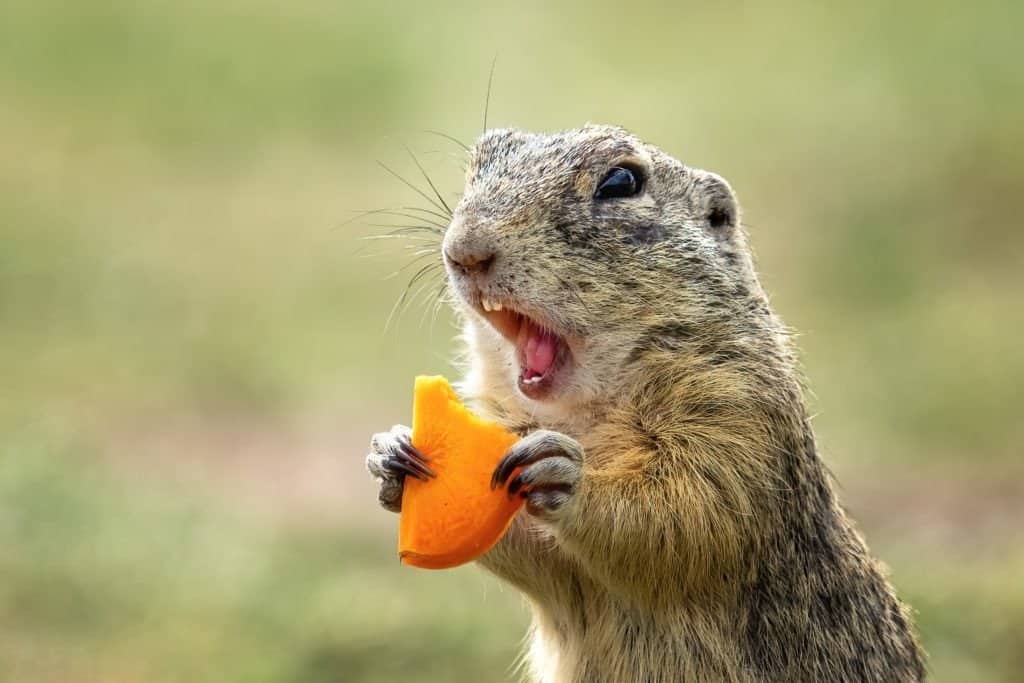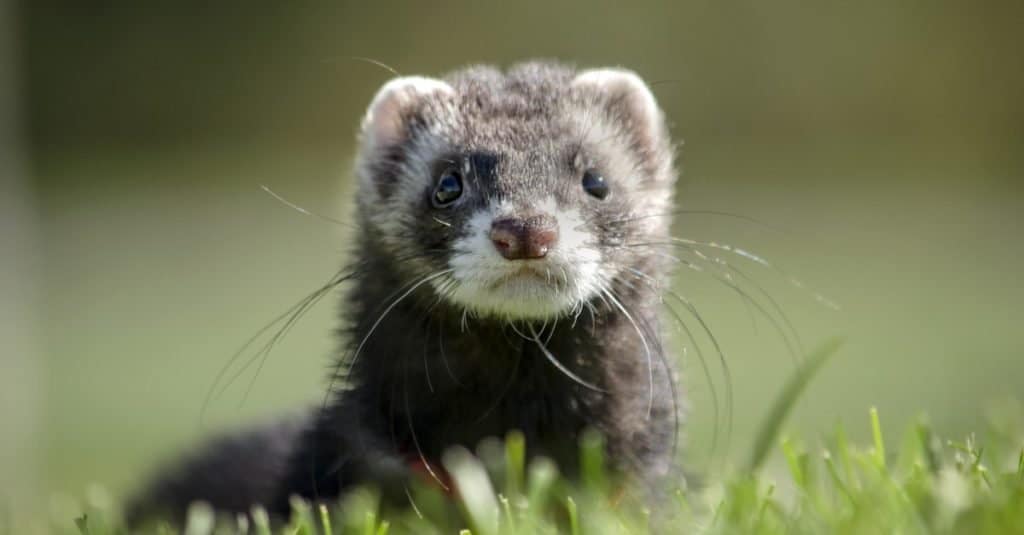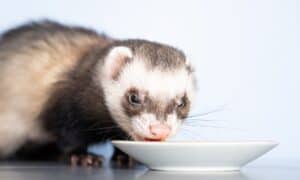Ferrets are incredibly intelligent animals that are often kept as pets. They are small carnivorous animals characterized by a pointed snout and an elongated body. Ferrets are typically black or dark brown and often have cream markings. Given their appearance, the question “are ferrets rodents” often comes up and sometimes leads to confusion.
This article will dive into everything you need to know about ferrets. We’ll learn what makes a rodent a rodent and see whether ferrets fit into that category. We’ll also talk about how close wild ferrets came to extinction and learn about domesticated ferrets and their origins. So join us as we discover whether ferrets are rodents or not!
What defines a Rodent?

A rodent has incisors that do not stop growing.
©eumates/Shutterstock.com
More than 40% of all mammals in the world are rodents, and most (although not all) are characterized by short, stocky bodies and long tails. However, there is one thing that they all have in common – incisor teeth that never stop growing. All rodents are defined by this exact same feature, along with a lack of canine teeth. As their incisors don’t stop growing, rodents have to gnaw constantly on a range of food and materials to prevent their teeth from becoming too long for their mouths. Animals such as rats, mice, beavers, squirrels, gerbils, hamsters, and porcupines all fit the category of a rodent.
You might think that all that constant chewing would cause their teeth to become blunt and ineffective pretty quickly, but they don’t, as rodents have another unique feature – self-sharpening teeth. This occurs because they have a layer of tough enamel on the front of their teeth, while the rear is made from slightly softer dentin. The constant chewing action causes the softer dentin to wear away quicker than the harder enamel and creates a chisel-shaped edge to the teeth. This edge is extremely sharp, which allows them to chew through branches, plants, leaves, nuts, seeds, and grain.
Are Ferrets Rodents?

Ferrets have different teeth and body shape.
©Clement Morin/Shutterstock.com
Ferrets are not rodents. They have an elongated body and a pointed snout which is vastly different from the typical rodent shape. They also have different teeth – most notably, they have prominent canine teeth, and their incisors don’t grow constantly. Ferrets are also specialized meat-eaters and have a typically carnivorous diet. They are skilled hunters with a high prey drive and often actually eat rodents.
Ferrets are from a Different Order
While rodents are from the Rodentia order, ferrets are from the Carnivora order. Rodentia is the largest order of mammals and contains more than 2,000 species. The Carnivora order is the fifth largest order of mammals and contains around 280 different species. Members of the Carnivora order are known as “carnivorans” as they are specialized meat-eaters. This means that meat makes up a large part of their diet and is where the term “carnivores” comes from. However, not all members are strictly carnivorous, as many of them are omnivores. Other members of the order include lions, cheetahs, seals, skunks, wolves, bears, and many more. Additionally, ferrets are members of the Mustelidae family group, which includes weasels, badgers, otters, and mink. The Mustelidae family is commonly known as the weasel family.
Ferrets have Different Teeth (and Eat Rodents)
As we’ve already mentioned, rodents have constantly growing incisors and lack canine teeth. Ferrets teeth are completely different as they have twelve small incisors which don’t grow continually. Instead, ferrets have small incisors that they use to grasp prey and groom themselves. Their canine teeth are also prominent and are particularly suited for their lifestyle as meat-eaters. This is because the canine teeth are incredibly sharp and are also known as fangs. Ferrets use their canine teeth to bite and kill their prey. They do this by piercing the flesh on the back of the neck or the throat.
As well as having teeth that sets them apart from rodents, rodents are actually on the menu for ferrets. They have a high prey drive and eat a range of rats, mice, rabbits, birds, and prairie dogs.
Ferrets have been Domesticated for Centuries

Ferrets are often kept as pets and are inquisitive and playful.
©Maria Lazutkina/Shutterstock.com
There are only two living species of ferret – Mustela furo and Mustela nigripes. Ferrets are often kept as pets and were first domesticated around 2,500 years ago. Mustela furo is the domesticated ferret species, but incredibly European polecats are generally believed to be their wild ancestors. Domestic ferrets were bred from the polecats with the intention of creating an animal that was suitable for hunting vermin. In fact, nowadays many people still use ferrets for hunting rodents such as rats and mice.
Ferrets are extremely intelligent and domesticated animals that typically have a playful, curious, and mischievous nature. They are incredibly social animals and happily live in large groups. Ferrets are typically crepuscular (most active at dawn and dusk) or nocturnal. All ferrets like to burrow, and domestic ferrets like to sleep in an enclosed space.
Wild Ferrets
Although there are plenty of domesticated ferrets in the world, the same can’t be said for wild ferrets. The wild ferret species is the black-footed ferret (Mustela nigripes) which lives in North America and is an endangered species. Black-footed ferrets were extinct in the wild in 1996 but were reintroduced to the wild after a successful captive breeding program.
In the wild, ferrets live in grasslands. Ferrets are not the best diggers and tend to live in tunnels that other animals have already made. They prefer to live in tunnels that have been made by prairie dogs – which are actually the main food source for black-footed ferrets.
Up Next:
Thank you for reading! Have some feedback for us? Contact the AZ Animals editorial team.








